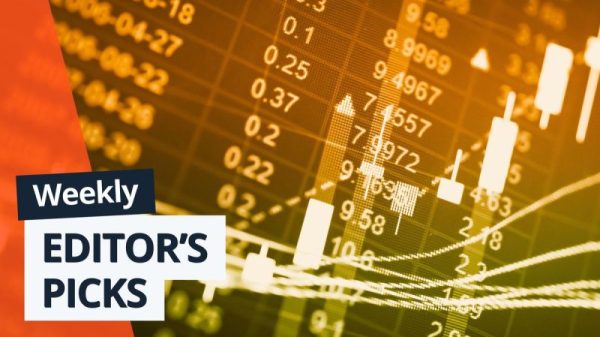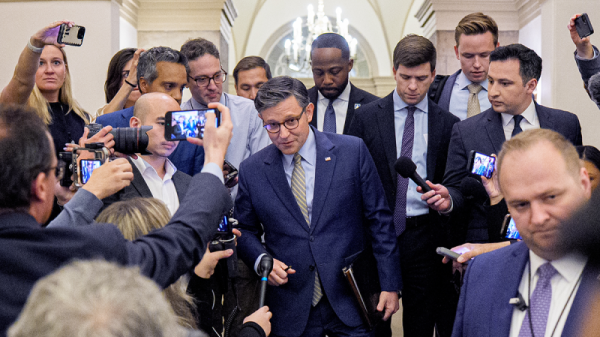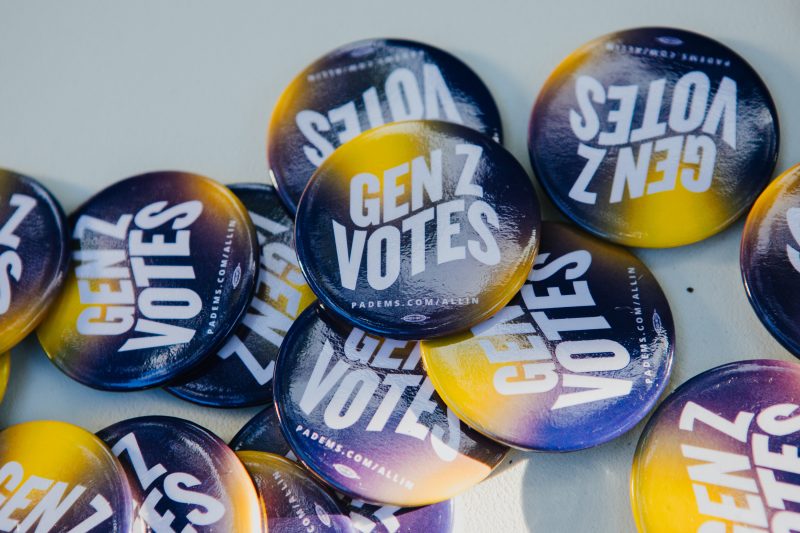Barack Obama’s election in 2008 heralded a new era in American politics. Younger Americans turned out heavily for the popular Democrat, facilitating his easy win over Republican John McCain and ripping open a partisan divide between their voting patterns and those of older Americans.
But that was 16 years ago, and voters who were under 30 in 2008 are now between 34 and 45 years old. America’s young voters today hold different views than young voters used to — and look different from the Obama-coalition young voters who have driven so much analysis in the ensuing years. Those differences, in fact, are central to understanding why there’s so much uncertainty about how young voters will vote in November — if they do at all.
For one thing, we often talk about President Biden’s weak polling with young voters and his weak polling with non-White voters as separate things. But they are related, given that young voters are more likely to be non-White.
Using data from the two most recent General Social Surveys (national polls completed in 2021 and 2022), we get a sense of how the U.S. adult population breaks down. Among Americans 18-30, there were about twice as many White people as non-White people. Among Americans ages 65 and older, there were about six White respondents for every non-White respondent. Many of the younger non-White respondents were Hispanic; part of the reason that older populations are more heavily White is that immigration was restricted during the mid-20th century baby boom.
At the same time, younger Americans are more likely to identify as independent than older Americans. That’s particularly true of young non-White people. In the GSS, about half of Whites under 30 were independent or independents who lean to one party or the other. Six in 10 non-Whites were. Among the oldest respondents, about a third of Whites were independents but only 3 in 10 non-Whites.
This is a central issue. As I wrote in November, the fact that younger Americans are often not actually Democrats means there isn’t a sense of institutional loyalty to the party or its candidates. That they are independents who often vote for Democrats has been good enough for a lot of Democrats in a lot of elections, but when the question at hand centers on a particular person — in November, President Biden — that is disadvantageous. In statewide races, younger voters (like lots of voters) will recognize the (D) or (R) before the name. They know Biden’s name and that of his opponent … which we’ll come back to in a moment.
We can see how this question of institutional association manifests in participation. Earlier this year, Pew Research Center published data showing that there was still a wide gap between younger and older Americans in their political views.
This overlaps with race, too. Non-White respondents in Pew’s data were much more likely to identify as Democrats or Democratic-leaning independents and, as noted above, younger Americans are more likely to be non-White. The GSS data also shows that 4 in 5 of those under 30 who identify as Republican or Republican-leaning independents are White.
The Pew analysis, though, looked only at registered voters — people who were participating in the political process to at least some extent. Gallup data released in February considered the political views of adults regardless of registration status. It found, unlike Pew, that there was a significant shift toward Republican identification among younger and non-White Americans, even if they didn’t register as Republicans.
There is some indication that younger voters are more frequently registering as Republicans than in the past. That my be a reflection of Biden’s increased unpopularity and its corollary: Donald Trump’s decreased unpopularity.
Earlier this year, I used YouGov data to show that views of Trump now are less negative among several groups than during his presidency. Compare the percentage of respondents each month who say they view him unfavorably with the average during his presidency.
Democratic, Black and Hispanic respondents still generally view Trump negatively, but less than they used to.
That analysis didn’t break down age, so I asked YouGov for data by age and gender. In part, this was a function of recent Brookings analysis documenting the divergence in values between young men and young women. What the YouGov polling shows is that, in every age group, men view Trump less negatively than women. But notice the annual averages broken out at the bottom of the chart below: Views among younger Americans have grown more positive since he first took office while views among older Americans sank before rebounding slightly.
In 2024, young men view Trump about as negatively as older women do. The 2017 annual average showed a nearly 50-point gap.
The silver lining for Biden is that he fares much better among those more-engaged voters. The best encapsulation of this phenomenon comes from the Harvard Youth Poll released earlier this year. Among all respondents under 30, Biden gets about 45 percent. Among those most likely to vote, he’s closer to 60 percent. Support for Trump, meanwhile, doesn’t change.
Historically, of course, younger people are less likely to vote anyway. That was one reason the Obama result was so striking: Young people actually turned out! Siena College polling conducted for the New York Times and Philadelphia Inquirer in six battleground states found that younger people were less likely to say they were likely to vote than respondents overall.
That same poll also showed that younger people were a bit more skeptical about the political and economic system than older Americans. More than three-quarters said the system needs to be torn down completely or changed significantly. Such sentiments turn up elsewhere, too — and in states where young people were more likely to view Trump’s interest in upending the system as a positive, Trump fared better.
Here we could segue into other areas in which younger Americans diverge from older Americans, like media consumption. New research from Pew shows that younger Americans are less likely to get news about the election from journalists and news organizations than older Americans, while they are more likely than older people to get it from friends, celebrities, social media personalities and other ordinary people they don’t know.
But this is probably to a significant extent a function of whether those groups seek out election news. If you aren’t trying to stay up to speed on the election, it makes sense that you would get more information passively from non-news sources. Consider that the Harvard Youth Poll found that younger Americans had the same general concerns about the election as older Americans, suggesting that the differences in consumption (or reception) of political news didn’t lead to a divergence in priorities.
So what do we have? A less engaged, more diverse population that isn’t as hostile to Trump as it used to be even as it has grown more skeptical of Biden — and lacks the institutional ties to the Democratic Party that might incline them to vote for the incumbent president anyway. There are a lot of fringes and asterisks that can modify those descriptors, but that appears to be the important distillation.
What will matter in November, then, is who turns out to vote. Which, of course, is what matters every November.







































